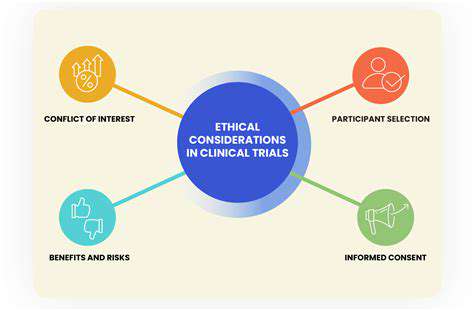Introducing a New Pet to Your Existing Furry Family
Bringing a new pet into your home is an exciting time, but it's crucial to introduce them gradually to minimize stress and ensure a smooth transition. This initial introduction phase is all about creating a positive association with their new surroundings and the other members of the household. Careful planning and a calm demeanor are key to success.
The first few days should focus on scent recognition rather than face-to-face encounters. Place the pet's carrier or bedding near the area where they'll be living. Allow the existing pets to sniff the carrier or bedding, but avoid direct contact. This allows the animals to familiarize themselves with the new scent without the pressure of a physical encounter.
Safe Separated Spaces: Avoiding Confrontation
Creating separate spaces for the new pet and existing pets is essential during the initial introduction period. This allows each animal to adjust to the new environment at their own pace. Use secure, temporary barriers to keep them physically separated while still allowing visual and auditory interaction.
Using dividers or baby gates can help prevent unwanted interactions and allow each animal to feel safe and secure in their own space. This is especially important for pets with varying personalities or past experiences. Observe their behavior closely for any signs of aggression or fear. Adjust the approach as needed.
This separation period allows for a period of acclimatization, crucial for the new pet's comfort and the existing animals' familiarity.
Positive Reinforcement Training: Building Trust
Positive reinforcement training is crucial for both the new and existing pets. Focus on rewarding calm and positive behaviors. This helps build trust and a positive association with each other. Avoid punishment or force, as this can create fear and anxiety.
Use treats, praise, and toys to reward calm interactions and encourage positive associations. Consistency is key. Keep training sessions short and frequent, focusing on building trust and respect between the animals. This approach helps to shape future interactions and create a harmonious household.
Consider a professional dog trainer or certified animal behaviorist for guidance. They can offer personalized advice and strategies tailored to your specific pets and situation.
Supervised Interactions: Gradual Integration
Once the initial separation period is over and both pets exhibit calm behavior in their respective spaces, you can start supervised interactions. Keep these interactions short and controlled. Allow the animals to sniff each other through a barrier or a gate, gradually increasing the time of interaction.
Monitor their body language carefully. Signs of fear, aggression, or stress should signal a need to separate them immediately. Continue rewarding calm behaviors and providing positive reinforcement. It's essential to remain patient and understanding throughout this process.
Remember, introducing a new pet is a process, not an event. Patience and understanding are key to a successful integration.
Creating a Comfortable and Safe Space for the New Arrival
Creating a Sanctuary: Initial Preparation
Before bringing your new furry friend home, meticulous preparation is key to ensuring a smooth transition. This involves more than just gathering supplies; it's about creating a safe and comforting space tailored to their needs. Think about the size of the area you'll dedicate to them. Consider the potential for accidents, and strategically place litter boxes or puppy pads in areas that are easily accessible but not too prominent in the home. Creating a quiet, secure corner with blankets and soft bedding is crucial for a new pet's initial adjustment.
A designated area with familiar smells from their previous environment can also help. Bringing a small amount of bedding or toys from their previous home can provide comfort and familiarity during this stressful adjustment period. This will help ease their nerves and encourage a feeling of security.
Understanding Your New Companion's Needs
Every animal has unique needs and personalities. Before you even bring them home, research their breed or species to understand their typical temperaments and behaviors. This will help you anticipate their needs and potential challenges, and will help you feel better prepared for the challenges that may arise.
Consider factors like their activity level, dietary requirements, and potential health concerns. This knowledge will be invaluable in providing the necessary care and attention to ensure their well-being, and will equip you with the knowledge to handle any surprises.
Safeguarding Your Home
A new pet's exploration of their surroundings can sometimes lead to unexpected incidents, especially during the initial days and weeks. Secure any potentially hazardous items, like cleaning products, medications, or small objects that could be a choking hazard. Invest in childproof locks for cabinets and drawers containing these items to prevent accidents.
Be mindful of electrical cords and wires, as curious pets may try to chew or play with them. Cover or secure these areas to prevent potential dangers, and to prevent your pet from getting hurt.
Introducing Essential Supplies
Having the right supplies on hand is crucial for creating a comfortable and safe environment for your new pet. This includes food and water bowls, a comfortable bed or crate, and appropriate toys for stimulating their minds and promoting healthy physical activity. Consider providing multiple toys to encourage exploration and prevent boredom.
Don't forget about essential supplies like a collar with identification tags, grooming tools, and any medications they may require. Having all these items readily available will help you manage their care more efficiently.
Establishing a Routine
Establishing a consistent daily routine helps pets feel secure and predictable. This includes feeding times, playtime, and potty training schedules. Consistency is key in helping your new companion adjust to their new surroundings and develop healthy habits. A consistent routine will create a sense of comfort and security that is essential for their mental well-being.
A predictable routine will reduce stress and anxiety, helping them adjust to their new life more smoothly. Set clear boundaries and expectations that you can consistently implement throughout the day.
Building Trust and Bonding
Patience and understanding are vital during the initial stages of introducing your new pet to your home. Avoid sudden movements or loud noises that could startle or frighten them. Spend quality time with your new companion, offering gentle attention and positive reinforcement. Engage in activities that help them feel safe and secure, like cuddling, playing, or simply spending time in their presence.
Taking the time to build a strong bond will help your new pet feel loved and accepted, and will lay the foundation for a lasting and loving relationship. Be patient and understanding, and give them space when they need it. Remember that building trust takes time.
Beyond the bustling tourist hubs and well-trodden paths lie hidden gems, waiting to be discovered. These off-the-beaten-path destinations often offer a more authentic and immersive experience, allowing you to connect with the local culture and environment in a profound way. Exploring these hidden corners often leads to a more fulfilling and memorable travel experience.
Addressing Potential Conflicts and Challenges

Understanding the Nature of Conflicts
Conflicts are inherent parts of any complex system, whether interpersonal, organizational, or societal. They arise from differing perspectives, values, and needs. Recognizing that these conflicts are inevitable is the first step towards effectively addressing them. Understanding the root causes of a conflict is crucial before attempting to resolve it.
Often, conflicts stem from miscommunication or a lack of clarity regarding expectations and responsibilities. This can lead to misunderstandings and escalate tensions. Addressing the underlying issues is key to finding lasting solutions, rather than merely resolving the surface-level symptoms.
Identifying Potential Sources of Disagreement
A crucial aspect of conflict resolution is identifying the specific points of contention. This involves actively listening to all parties involved, understanding their perspectives, and acknowledging the validity of their concerns, even if you disagree with their conclusions. Consider the potential motivations and past experiences that may be contributing to the conflict.
Often, seemingly minor disagreements can escalate into major conflicts if not addressed promptly and effectively. Recognizing potential triggers and early warning signs can help prevent conflicts from spiraling out of control. Thorough communication and careful consideration of each party's position are essential in this process.
Developing Effective Communication Strategies
Open and honest communication is paramount in addressing potential conflicts. Active listening, empathy, and a willingness to compromise are critical components of effective communication strategies. Clearly articulating your own needs and concerns while being receptive to others' perspectives is essential for a productive discussion. This involves using I statements to express your feelings without placing blame.
Employing non-violent communication techniques can significantly improve the effectiveness of conflict resolution. This includes focusing on empathetic understanding and avoiding accusatory language.
Implementing Strategies for Conflict Resolution
Once the sources of conflict are identified and communication strategies are in place, implementing appropriate resolution strategies is crucial. This may involve mediation, negotiation, or other conflict resolution techniques depending on the specific situation. Collaboration and a willingness to find common ground are critical elements in achieving a mutually beneficial outcome.
Mediation can be a valuable tool for facilitating communication between conflicting parties. A neutral third party can help guide the conversation and ensure all perspectives are heard. Focus on finding solutions that address the concerns of all involved.
Maintaining Healthy Relationships Post-Conflict
Conflict resolution isn't just about ending the immediate disagreement; it's about fostering healthy relationships moving forward. Maintaining open communication, respecting each other's viewpoints, and actively working toward reconciliation are essential. Building trust and understanding after a conflict is critical to preventing future disagreements. This involves acknowledging past mistakes and working to improve future interactions.
Learning from the conflict experience can be a powerful tool for future interactions. Reflecting on the events, identifying lessons learned, and implementing preventative measures can strengthen relationships and prevent similar conflicts from arising in the future. Consider implementing processes that encourage feedback and constructive criticism.











